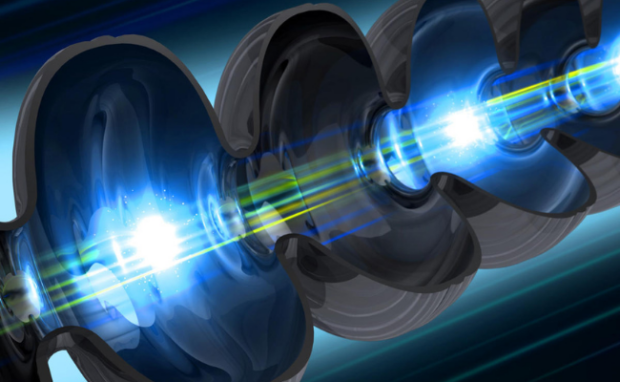World’s most powerful X-ray laser fired recently
The US Department of Energy’s SLAC National Accelerator Laboratory emitted its first X-rays using the upgraded Linac Coherent Light Source (LCLS) X-ray free-electron laser (XFEL). The lab website says the LCLS-II cost $1.1 million and generates a million X-ray flashes per second, making it 8,000 times faster than its predecessor.
Merge ideas of an advanced laboratory and a massive laser, and you’d probably think it’s about a movie villain’s superweapon. Yet, this X-ray laser could shine the way toward unprecedented advancements in biology, chemistry, physics, and other branches of science. It lets scientists absorb undetectable phenomena in real time, letting us learn more about them.
This article will discuss the purpose of the LCLS-II X-ray laser system and explain its function. Later, I will cover some other laser developments.
How does the record-breaking X-ray laser work?

Photo Credit: phys.org
Science news website Interesting Engineering puts the X-ray laser’s purpose into perspective by discussing its predecessor. The first Linac Coherent Light Source helped scientists observe plants and algae take sunlight and release oxygen.
Experts used it to create the first “molecular movie” for understanding complex chemical processes. Moreover, the LCLS helped us determine how planets evolve and diamond rains form.
It fired its first laser in April 2009. Several years later, the DOE’s Stanford Linear Accelerator Center (SLAC) created a larger one dubbed the LCLS-II.
It can fire significantly more X-ray bursts due to its superconducting accelerator. The latter has 37 modules that cool down helium to -456°F or -271°C.
Interesting Engineering says that it is slightly above absolute zero. Those extremely low temperatures enable the accelerator to increase electrons to high energy states with nearly zero energy losses.
However, the SLAC researchers still used their original copper pipe accelerator. As a result, they can collect data over a wide energy range. Also, they can gather more information in less time and expand the types of experiments that the facility can execute.
You may also like: X-rays found on Uranus for the first time
The news website said the LCLS-II has a new electron source and two new undulators that can produce X-rays from the electron beams. The “hard” and “soft” undulators produce low- and high-energy X-rays.
Consequently, researchers can perform experiments with significantly higher precision and the option to probe further. Also, the SLAC website said the X-ray laser will provide “unprecedented insights into chemical and biological reactions.”
It could lead to “more efficient and effective processes in industries ranging from renewable energy to the production of fertilizer and the mitigation of greenhouse gases.” Also, this will “provide an unprecedented level of detail to inform the development of fields such as ultrafast computing, sustainable manufacturing, and communications.”
What are some other laser projects?

Photo Credit: engadget.com
The Department of Energy’s X-ray laser program isn’t the only laser-related development lately. For example, Google is testing a new method of providing internet connectivity with lasers.
Project Taara “uses light to transmit information at super high speeds through the air as a very narrow invisible beam.” General Manager Mahesh Krishnaswamy told Euronews, “This is as simple as a digital camera with a laser pointer.”
You may also like: NASA laser communications performed trials
A transmitter fires a laser with data to the receiver’s “camera” so the latter can interpret and turn them into bytes. Contrary to popular belief, Project Taara’s light beam works in forested regions, urban areas, bodies of water, railway tracks, and others unreachable by wireless internet.
Unlike the SLAC X-ray laser, the Chinese military’s latest laser is a massive weapon. Yuan Shengfu and National University of Defense Technology scientists discovered how to fire it indefinitely.
It blows gas that flows through the weapon to remove excess heat. On August 4, 2023, Yuan Shengfu released a paper about a similar cooling system that uses helium gas. He and his team marked it as “a huge breakthrough in improving the performance of high-energy laser systems.”
Conclusion
The world’s largest X-ray laser recently fired its first shot, signaling the prospect of groundbreaking scientific discoveries. The LCLS-II will enable scientists to observe phenomena imperceptible through other means.
It will allow them to learn more about intricate processes in real-time. As a result, they could conduct new experiments previously impossible.
At the time of writing, there are no updates regarding the LCLS-II’s latest scientific projects. Learn more about the latest digital tips and trends at Inquirer Tech.